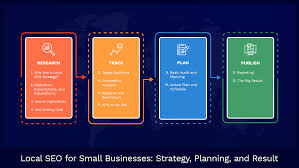The Power of Local SEO for Your Business
Local SEO is a crucial aspect of digital marketing that focuses on optimizing your online presence to attract more business from relevant local searches. With the rise of mobile search and the increasing use of location-based services, local SEO has become more important than ever for businesses looking to connect with their target audience.
Why Local SEO Matters
Local SEO helps businesses appear in local search results when potential customers are looking for products or services in their area. By optimizing your website and online profiles for local searches, you can increase your visibility to local customers and drive more foot traffic to your physical location.
Key Strategies for Local SEO Success
Here are some essential strategies to boost your business with local SEO:
- Optimize Your Google My Business Listing: Claim and verify your Google My Business listing to ensure accurate information about your business, including address, phone number, and business hours.
- Create Local Content: Develop content that is relevant to your local audience, such as blog posts about community events or local news.
- Get Listed in Online Directories: Ensure that your business is listed in online directories like Yelp, Yellow Pages, and other industry-specific directories.
- Build Quality Backlinks: Earn backlinks from reputable websites in your industry to improve your website’s authority and credibility.
- Solicit Customer Reviews: Encourage satisfied customers to leave positive reviews on platforms like Google My Business and Yelp to build trust with potential customers.
The Benefits of Local SEO
Implementing effective local SEO strategies can have a range of benefits for your business, including:
- Increase in foot traffic to your physical location
- Better visibility in local search results
- Growth in brand awareness among local consumers
- Higher conversion rates from targeted local leads
Contact Our Local SEO Consultants Today!
If you’re ready to take your business to the next level with targeted local SEO strategies, our team of experienced consultants at KeyBoost.co.uk is here to help. Contact us today to learn how we can tailor a customised local SEO plan to meet your business needs and drive growth in your target market.
Optimize your business with expert local SEO strategies today!

